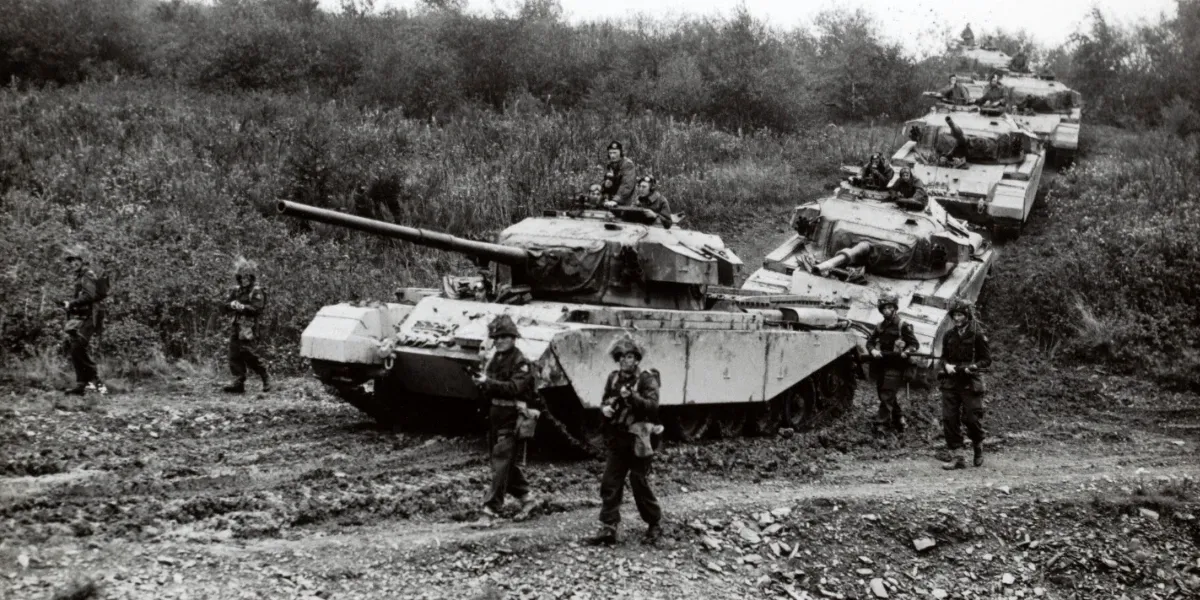The Price of Freedom: Or Freezing Your Balls Off in a German Forest

The Cold War Script
At 1 Armoured Division HQ and Signal Regiment, our lives revolved around the next exercise. Exercises normally lasted two to three weeks, and the scenario, from what little I was told or understood, always went something like this:
- The Soviets mass on the border
- We deploy to our wartime positions
- The Soviets invade
- We move around a lot, mostly in retreat
- To stop the Soviet advance, NATO uses a tactical nuclear weapon
- We all go back to barracks
Nobody ever told us what happened after NATO dropped a tactical nuke. In the real world, it would have probably meant Armageddon—everyone dying in a bright blinding light, from radiation sickness, or from starvation during the nuclear winter that followed.
On return to Verden, we'd spend a couple of weeks cleaning up the Land Rovers and our equipment, getting stuff repaired, then do it all over again. The initial excitement about saving the free world quickly became a tedious slog.
Life in the Field
The main thing I remember about being on exercise was that I was always tired, cold, and often wet. There were normally three of us on a crew: an NCO and two signalmen (privates). We'd work shifts on the radio, normally four hours on and eight hours off. During the "off" time, you'd have to eat, sleep, clean up, and sometimes get lumbered with two hours of guard duty, depending on where we were.
Sleep was often interrupted by moves. Sometimes we had prior notice, but often they would declare a crash move, so you had to pack up very quickly. This generally meant everything would be dumped in the trailer or back of the Land Rover, resulting in a mess that would require a couple of hours at the next location to sort out.
The Technology: Larkspur Radio Systems
The radio sets we used at the time were designed in the 1940s and were part of the Larkspur range. Our detachment used the C11 High Frequency (HF) sets and the C42 and C45 VHF and High HF sets. The C11 was typically operated by telegraphists because of its ability to transmit both voice and carrier wave, which allowed us to send Morse code.
For the technically minded, I've included a more detailed overview below. Please note that I had to research this information, as my memories of operating these sets have become very hazy over the years. I'm not even sure if the information is 100% correct.
C11/R210 Radio Set: The Workhorse
The C11/R210 radio system was a key component for command networks at Corps, Divisional, and Brigade levels. Operating in the High Frequency (HF) band from 2 to 16 MHz, it supported both Amplitude Modulation (AM) for voice communication and hand-keyed Carrier Wave (CW) for Morse code.
Key specifications:
- Maximum power output: 50 watts
- Tuning: 10 kHz increments
- Range: Up to 25 miles for voice, 75+ miles for Morse code (under ideal conditions)
- Power: 24V battery or 120/240V AC source
The R210 transmitter included a built-in 100 Kc/s crystal calibrator that allowed operators to precisely tune the set without radiating a signal. This was crucial for preventing enemy detection of the radio's geographical position during setup.
The versatility of the C11 was remarkable. It could be installed in Armoured Fighting Vehicles (AFVs) and Land Rovers, airdropped in specialized containers, transported by mule teams (as it was in Borneo), or carried by hand. When fitted with appropriate equipment, these sets could also function as Rebroadcast Units to extend network range.
C42 and C45: The Vehicle Sets
The Larkspur C42 and C45 were developed to replace the wartime Wireless Set No. 19. These radios were very similar, with the key difference being their frequency ranges:
Technical specifications:
- C42: 36-60 MHz (low VHF)
- C45: 23-38 MHz (high HF)
- Power output: 15-20 watts, with a reduced "low-power" setting
- Range: Up to 10 miles (16 km)
Components included:
- Transceiver
- Crew intercom amplifier
- Power supply unit
- Aerial Tuning Unit No. 6
The Larkspur system emphasized modularity and used common components, including Plessey Mk. IV connectors. Frequency indication was displayed on a film strip system. The C42 was particularly used by Royal Artillery Observation Posts, while the C45 handled artillery communication from Corps to Division level.
The Reality Check
What I do remember clearly is that moving about and everything it entailed was a complete pain in the arse. The exercises were just games really—much bigger and more expensive versions of the battles we'd fought over the Bank on Wern Fawr Road, the woods and orchard in Blaenymaes, or the waste ground behind my Nan's house.
Perhaps it could be argued that the NATO war games were more realistic than our childhood battles, but I'm not so sure. In our fertile minds at 10 years old, we were actually fighting the war, completely invested in victory or defeat.
Of course, the main advantage I had fighting battles at home was that when it got cold, I could nip back to my Nan's and sit by the fire for a bit. No such luxury when you're defending the free world in a German forest at -10°C.
The price of freedom, it turned out, was mostly just being permanently cold, wet, and tired while playing elaborate games of soldiers with very expensive toys.